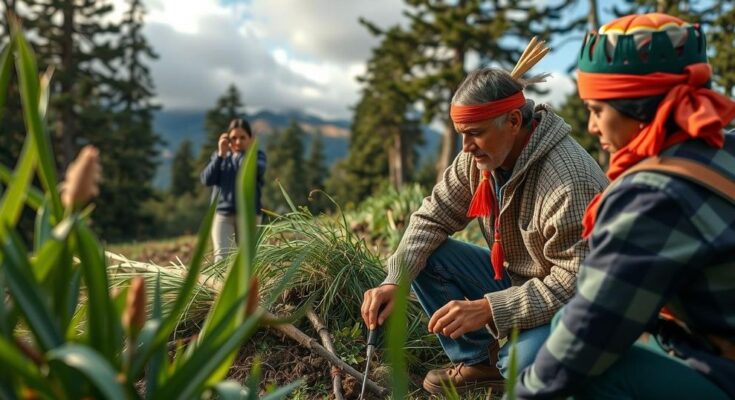Danielle Touma, a research professor at the University of Texas, has shifted her focus from theoretical climate research to collaborating with the Karuk Tribe in California. This partnership aims to integrate traditional ecological knowledge with scientific climate modeling to address the increasing risks of wildfires, droughts, and extreme weather faced by the tribe. Touma’s goal is to empower the Karuk in managing these challenges effectively.
Danielle Touma, a research professor at the University of Texas, Austin, has embraced her experiences with drought from her upbringing in Lebanon to dedicate her career to understanding climate challenges. With a strong background in water resources and a PhD in earth system sciences, she utilizes model simulations and statistical analyses to assess alterations in wildfire, drought, and rainfall phenomena due to global warming. Recently, Touma expanded her scope beyond theoretical research by collaborating with the Karuk Tribe in Northern California.
While engaged in a postdoctoral project at the National Center for Atmospheric Research (NCAR), she partnered with a University of Washington academic linked to the Karuk Tribe, who sought assistance in developing a hydrology model. This initiative aimed to gain insight into wildfire risks specific to the Karuk territory. Having visited the tribe last June, Touma recognized the essential role of understanding these risks in relation to the tribe’s cultural practices and livelihoods.
The impact of climate change on tribal nations in the United States is profound, affecting food sources, biodiversity, and traditional ways of life. As extreme weather events become increasingly frequent, the incidence of large-scale wildfires in California has escalated over the past two decades, posing significant threats to tribal communities. Touma’s objective is to assist the Karuk Tribe in addressing these climate challenges by leveraging their extensive knowledge of the land alongside modern scientific frameworks.
She aims to create a climate projection model that fuses tribal observations with Earth system model simulations, thereby empowering the tribe to assess future risks related to wildfire, drought, and extreme rainfall. Practicing prescribed burning and other land management strategies can serve as proactive measures against such risks. “I realized I wanted to continue working with them. They want to understand what these risks mean for their cultural practices and their livelihoods.”
Touma expresses enthusiasm for her collaboration with the Karuk Tribe, envisioning this partnership as a model for future interdisciplinary efforts involving Indigenous communities. She remarks, “Co-creating research with scientists and tribal communities is really what we need to be doing to address extreme weather risks.” Overall, her work underscores the urgency of integrating scientific research with Indigenous ecological knowledge to forge effective strategies for mitigating climate-related challenges.
The article discusses the critical intersection of climate science and Indigenous knowledge, particularly through the collaboration between Danielle Touma and the Karuk Tribe in Northern California. As climate change continues to pose significant risks to tribal nations, this partnership aims to merge advanced scientific modeling with the traditional ecological wisdom of the tribe. The article highlights the importance of addressing the unique challenges faced by Indigenous communities in light of shifting environmental conditions.
In summary, Danielle Touma’s collaboration with the Karuk Tribe significantly exemplifies how merging modern scientific methods with Indigenous knowledge can enhance preparedness for climate-related challenges. By embracing both advanced climate projections and the tribe’s historical understanding of their land, Touma seeks to empower the Karuk community to better manage and mitigate the risks posed by wildfires, droughts, and extreme weather events. This synergistic approach serves as a potential model for future scientific endeavors with Indigenous populations.
Original Source: thestoryexchange.org




